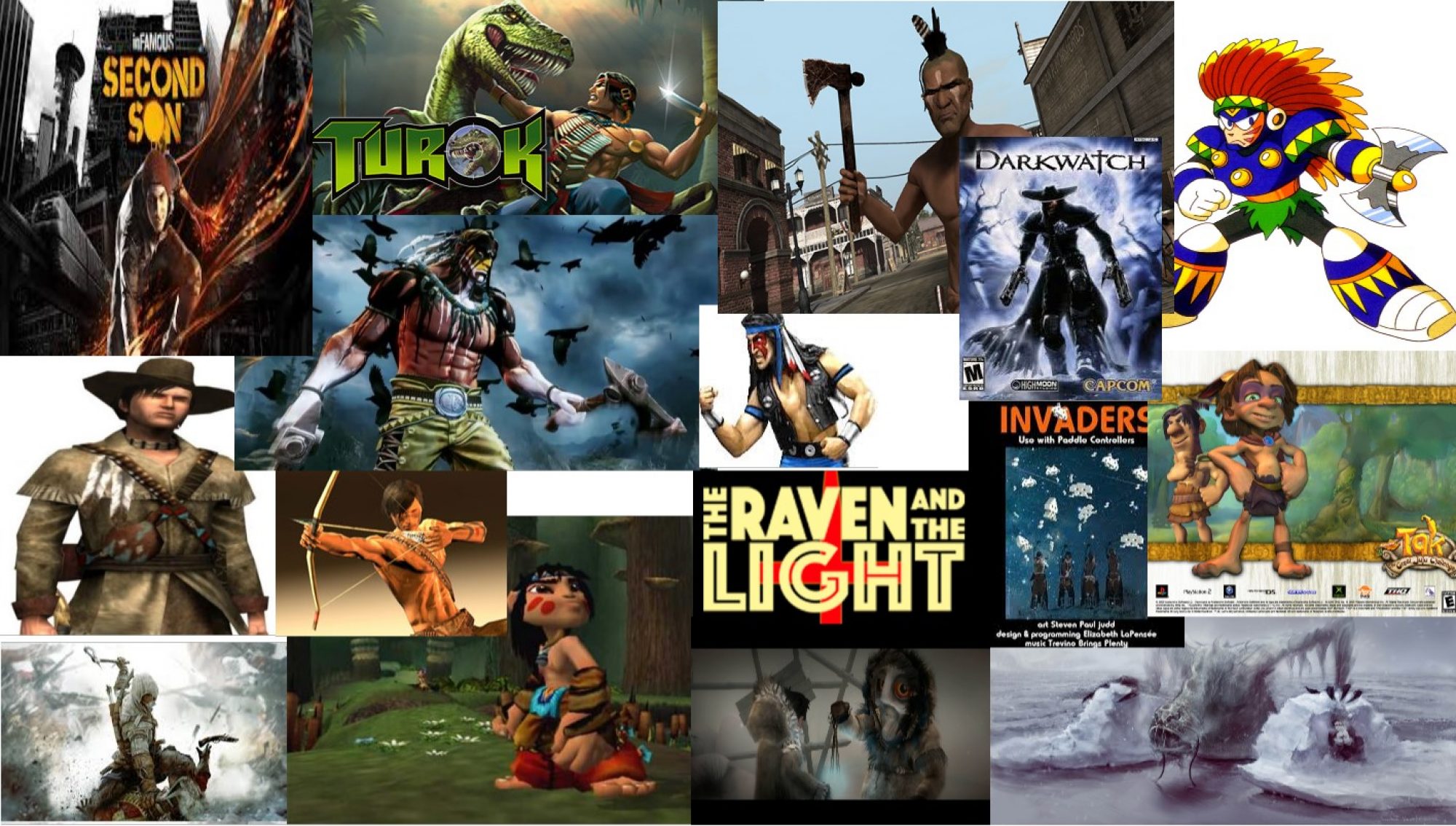
This post contains spoilers for Konas final boss and the main story.
The next game that involves Indigenous representations is the first person mystery adventure game Kona. In Kona, players take control of private detective Carl Faubert; who, after serving time in the military begins a new career as a private investigator. Carl receives a significant amount of money from the major copper mining businessman W. Hamilton to investigate vandalism and theft from local Cree peoples surrounding the small remote town in Northern Quebec. The game starts the player off entering the community on a calm fall afternoon when suddenly, an oncoming car causes Carl to serve off the road and crash. Carl awakens to a chilling blizzard with no recollection of what happened or what occurred while he was unconscious. The game uses stereotypical representations of “vision” quests as well as a Wendigo creature to connect itself to Indigenous culture.
Kona’s gameplay focuses on a combination of gameplay mechanics that relate to one another well. Firstly, the game initiates survival mechanics as Carl regains consciousness, he must find shelter, warmth, and food to survive the first few gameplay moments.The survival gameplay mechanics in Kona present multiple puzzles that require the player to gather materials like; wood, clothing, firestarters or matches, weapons and even essential items to repair all-terrain vehicles, which assist in quicker and safer traveling through the treacherous remote wilderness. The player is not alone in this world either, as they venture further into the isolated community, enemies like wolves and other entities are surrounding the town and will attack and hunt Carl. The player must scavenge weapons, ammo and health kits if they wish to survive the wilderness. These examples are just some of what Kona’s survival mechanics do for a player, with the culmination of their skills being put to the test as they must outsmart and defeat the creatures that hinder their progression.
Another important gameplay mechanic in Kona is the adventure or puzzle type mechanic. Much, if not all of Kona’s story revolves around Carl and the player exploring every house, vehicle, and even outhouses to find journals, newspapers and sometimes even evidence that links the dangers occurring in the community to an entity of a non-human form. During exploration, the player uses a camera, when taking a picture of a particular blue ice chunk or area around the ice chunk, spiritual or nonphysical tracks will appear, requiring the player to follow the trail to find the piece of the story.

When found, the player transports into a dream or vision like environment where a piece of backstory explains what happened to a particular resident. After the player collects four distinct vision stories, those “spirits” assist the player in breaking open a massive ice wall that hinders progression to the final area of the game. Upon passing through the broken ice wall, the player begins their battle with the final boss Wendigo creature.

Similarly seen in the game Until Dawn, the Wendigo creature portrays the main antagonist of the story in Kona. After resource extraction disrupts and disconnects the residents in the community, the people slowly turn on each other and begin to act out on one another violently. There is little to no connection to an actual Wendigo story from the Cree community that is in the game. Resource extraction loosely ties this Wendigo to the idea presented in the Until Dawn post that mentions Wendigo creatures form from destroying mother Earth through acts of removal.

The final instance is shown through the “vision” aspect the game relies on to tell the main story of the game. Throughout Carls journey, he finds several journal entries alluding to an affair happening between two residents, and a hunting accident that would be uncovered later on in the story. The woman who was the victim in the hunting accident happens to be one of the spirits that the player frees after completing that characters “vision” mission. Kona uses this “vision” aspect as well as the Wendigo creature to connect themes revolving around Indigenous culture.The community can only be saved form the Wendigo if Carl, a non-Indigenous outsider to the community defeats the monster himself. The “visions” that Carl experiences are an attempt to connect Carl to the Indigenous communities “spirit” to help fight the Wendigo. However, with no direct relationship linking the animals, people and environments seen in said visions, this representation of visions completely disconnects the relationship that visions have within particular Indigenous cultures and communities. Many Indigenous communities use vision quests as important traditions that give a person valuable lessons or answer important questions the person seeks. These experiences involve the person fasting in a particular location of traditional importance in that community, which an elder gives to the individual. As a result of this disconnection, the importance of visions and vision quests themselves become compromised, leading to those traditions becoming unessential to the identity, culture, and community of that person.
Kona is a game that uses both stereotypical representations of the Wendigo creature and visions and vision quests from the Cree community that the game’s story revolves around. Without relating traditional knowledge about the Wendigo creature or the importance of vision quests themselves, the game disassociates the importance of both Wendigos and visions within Indigenous communities, cultures and identities.

